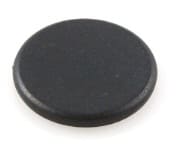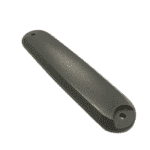BBSPL is one of the prime Manufacturers, Supplier of an RFID includes RFID Technology, RFID Applications, RFID Tags, Active RFID Tags, Passive RFID Tags, RFID technology for Library, RFID used for, UHF Inlay.
Radio Frequency Identification or more commonly known as RFID is the base technology of an umbrella of radio wave identification. RFID is communicated by RF or Radio waves, which is transmitted from an RFID tag back to the receiver, which would be the RFID reader.
The RFID Reader also known as the transceiver sends a signal or radio wave to the RFID tags or labels, the tags then wakeup and transmits back the ID of the RFID tag or label.
RFID Frequencies:
RFID readers, Tags, and Labels are designed with specific frequencies, which are usually, but not always designed for specific uses and applications. LF or Low Frequency which is usually 125.0 kHz and 134.2 kHz for most popular applications and actually goes up to 150 kHz on the scale of frequencies. LF 125.0 KHz is mostly used for industrial applications, where 134.2 kHz is used for animal identification.
Low Frequency RFID: LF (125.0 kHz and 134.2 kHz)
LF 125.0 KHz is used most often in industrial applications, such as asset management. Typical LF RFID tags are disc transponders made with PVC or epoxy casing. Low frequency RFID tags come in many other forms including glass transponders.

LF Disc Tag
LF 134.2 kHz is used exclusively for animal identification. The most popular 134.2 KHz tags for animal identification are ear tags, Bolus, and injectable glass transponders. The 134.2 kHz RFID tags are regulated and exclusive to the animal identification market, with the RFID ear tags and glass transponders encoded with the country code of the animal. An example would be a typical ear tag for the United States with the beginning tag ID being 840, which represents animals from the United States. Canada would have ear tags or glass transponders with the country code 124.
High Frequency RFID: HF (13.56 MHz)

Smart Card
HF 13.56 MHz technology is one of the most often used frequencies of RFID, typically used for smart card technology. High frequency RFID is used for asset management, access control, supply chain, and mobile transactions such as peer to peer communications and wireless payments as used in Near Field Communications, more commonly known as NFC. HF Tags, Labels, and cards provide a more secure form of identification, such as the ISO standard for smart cards and NFC.
Ultra High Frequency RFID: UHF (860 – 960 MHz)
UHF RFID technology is one of the newest frequencies that have become popular over the last 5 years, due to its increased read range over LF and HF based tags. Although UHF tags have a read range over 10 meters under ideal conditions, UHF is considered passive technology along with LF and HF tags.

UHF Inlay
UHF tags can provide more flexibility for more applications than HF or LF technology but has its limits on feasibility with secure identification. UHF technology is mostly used for supply chain management, inventory control, and vehicle identification, but like all other frequencies can be used in many different applications.
UHF frequencies on RFID readers and tags have different frequency ranges that are regulated for different countries; the most popular is 868-870 MHz (Europe) and 902-928 MHz (North America).
BBSPL Brings RFID applications, applications for RFID, applications of RFID, RFID used for, applications of RFID technology, RFID technology applications, applications of RFID tags, RFID technology, RFID technology for Library, Active RFID Tags, Passive RFID Tags, Active RFID Vs Passive RFID, UHF Inlay.
Active RFID 2450 – 5800 MHz (Microwave) : Active RFID Vs passive RFID
Active RFID Tags is different from passive RFID Tags includes LF Tags, HF Tags and UHF Tags. Active tags are battery assisted and have a read range of 100’s of meters. Most common use of active RFID tags would be RTLS (Real Time Located Systems) applications, such as patient tracking in health care, employee tracking in harsh environments such as the mining industry.
 Most typical RFID applications use passive RFID technology, due to the cost effectiveness versus active RFID. The most common applications for RFID such as asset management, inventory control, and access control are all based on passive tags.
Most typical RFID applications use passive RFID technology, due to the cost effectiveness versus active RFID. The most common applications for RFID such as asset management, inventory control, and access control are all based on passive tags.
This brief article explains RFID technology and is the basics of RFID, to learn more about typical applications that use RFID technology feel free to contact us at any time for inquiries. We are application experts and can provide RFID readers, RFID tags and labels based on your requirements and application needs.
